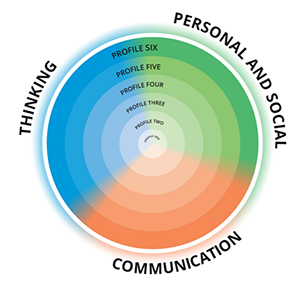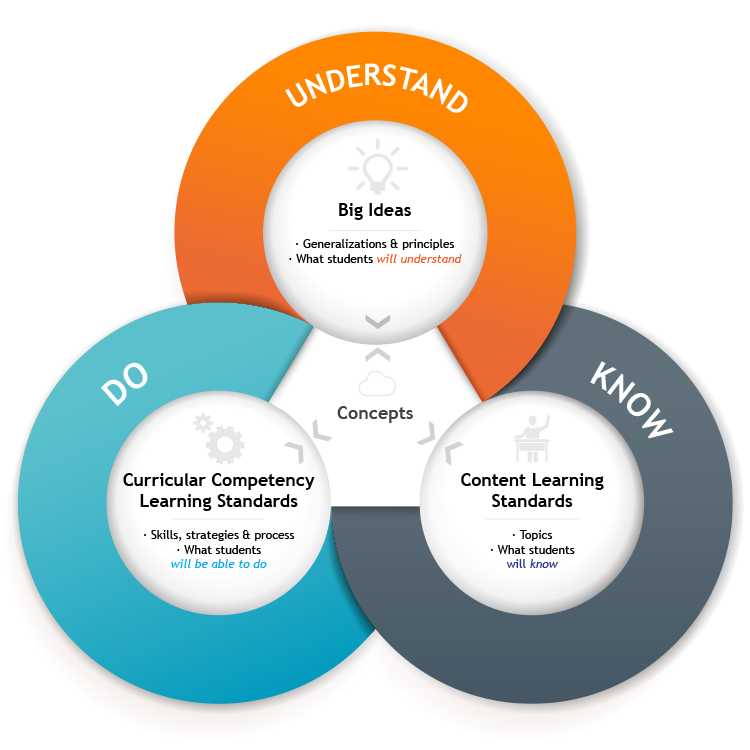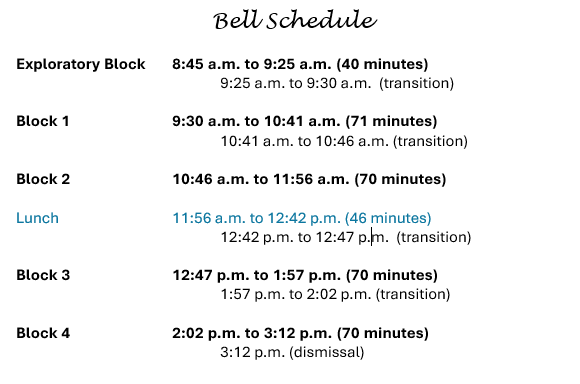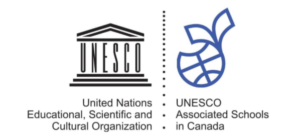Core Competencies
The Core Competencies are sets of intellectual, personal, and social and emotional proficiencies that all students need in order to engage in deep, lifelong learning. Along with literacy and numeracy foundations, they are central to British Columbia’s K-12 curriculum and assessment system and directly support students in their growth as educated citizens.
On this page:
Students develop Core Competencies when they are engaged in the “doing” – the Curricular Competencies – within a learning
area. As such, they are an integral part of the curriculum. While they manifest themselves uniquely in each area of learning, the
Core Competencies are often interconnected and are foundational to all learning. Before students enter school, development
of Core Competencies begins at home and then continues throughout their life. Students encounter opportunities to develop
their competence in formal and informal settings. They move from demonstrating competence in relatively simple and highly
supported situations, to demonstrating independence in more complex and varied contexts. Competency development does
not end with school graduation but continues in personal, social, educational, and workplace contexts. Students, teachers, and
parents/guardians share responsibility for the ongoing development of Core Competencies. Each group has its own
considerations.

Unpacking the three Core Competencies

Communication -The Communication competency encompasses the knowledge, skills, processes and dispositions we associate with interactions with others. Through their communication, students acquire, develop and transform ideas and information, and make connections with others to share their ideas, express their individuality, further their learning, and get things done. The communication competency is fundamental to finding satisfaction, purpose and joy.

Thinking – The Thinking competency encompasses the knowledge, skills and processes we associate with intellectual development. It is through their competency as thinkers that students take subject-specific concepts and content and transform them into a new understanding. Thinking competence includes specific thinking skills as well as habits of mind, and metacognitive awareness. These are used to process information from a variety of sources, including thoughts and feelings that arise from the subconscious and unconscious mind and from embodied cognition, to create new understandings.

Personal and Social – The Personal and Social competency is the set of abilities that relate to students’ identity in the world, both as individuals and as members of their community and society. Personal and social competency encompasses what students need to thrive as individuals, to understand and care about themselves and others, and to find and achieve their purposes in the world.
Curriculum model
All areas of learning are based on a “Know-Do-Understand” model to support a concept-based competency-driven approach to learning.
Three elements, the Content (Know), Curricular Competencies (Do), and Big Ideas (Understand) all work together to support deeper learning.

The big ideas consist of generalizations and principles and the key concepts important in an area of learning. They reflect the “understand” component of the know-do-understand model of learning.
The big ideas represent what students will understand at the completion of the curriculum for their grade. They are intended to endure beyond a single grade and contribute to future understanding.
The content learning standards — the “Know” of the know-do-understand model of learning — detail the essential topics and knowledge at each grade level.
The curricular competencies are the skills, strategies, and processes that students develop over time. They reflect the “do” in the know-do-understand model of learning. While curricular competencies are more subject-specific, they are connected to the core competencies.




